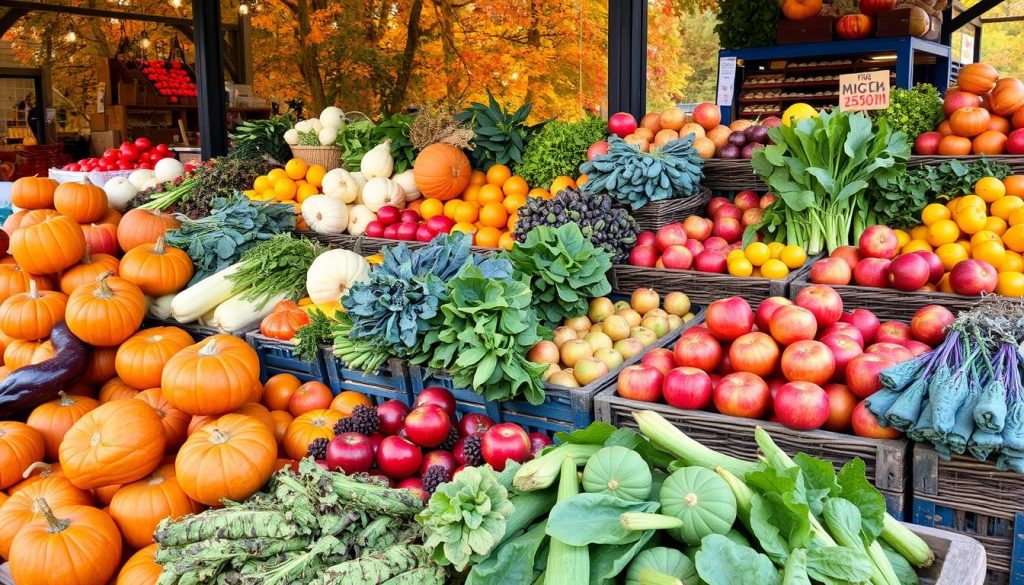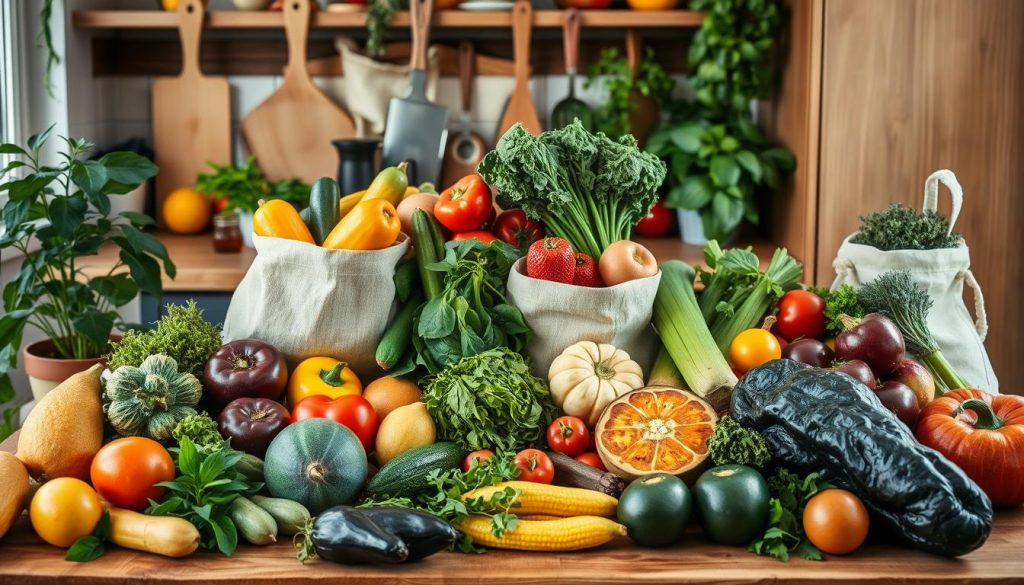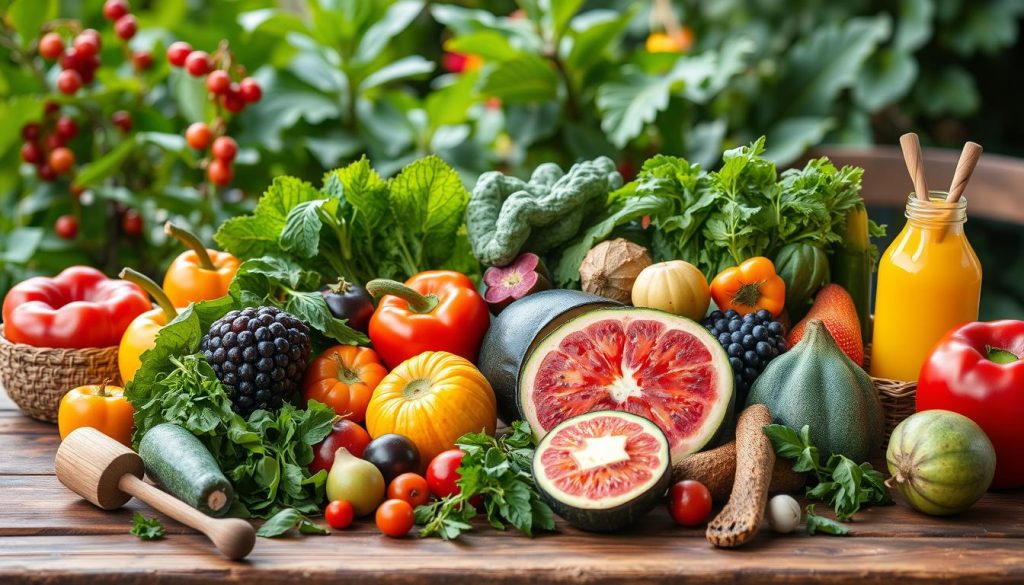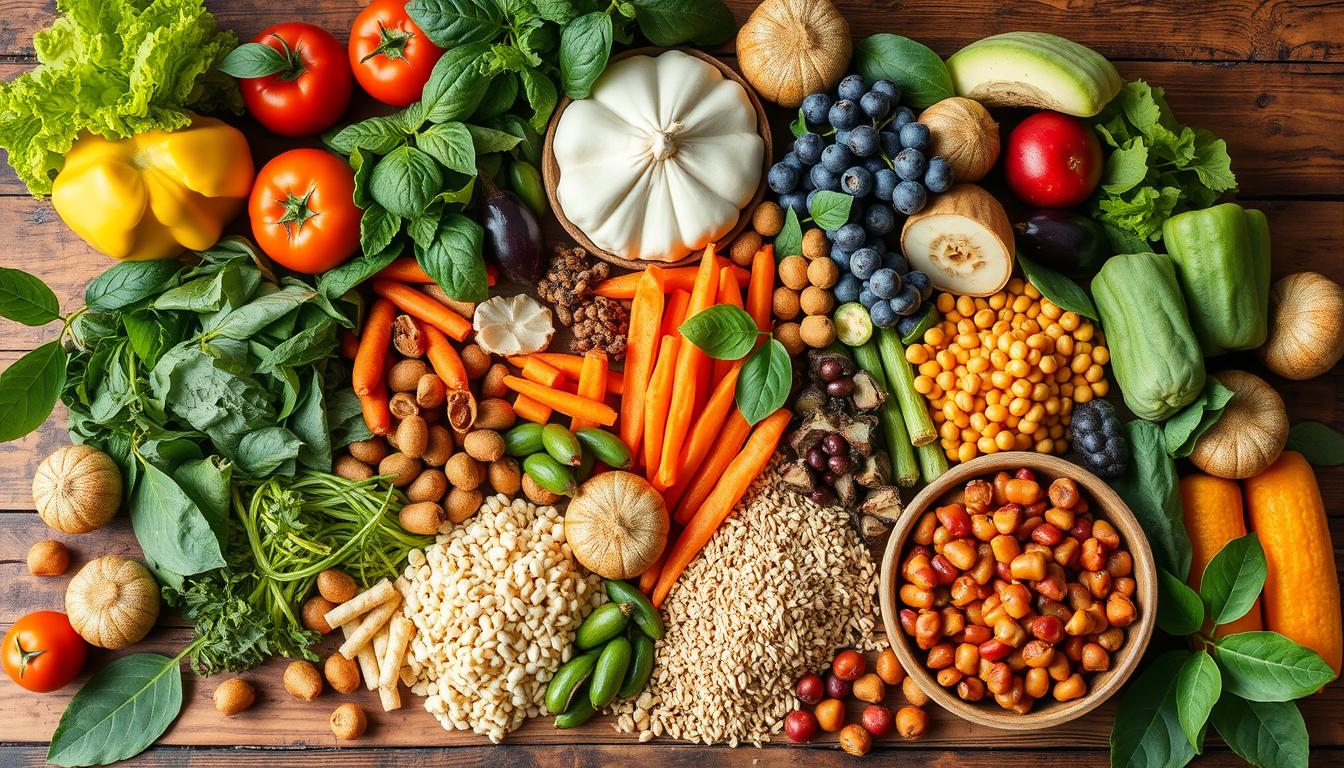I’ve learned how our food choices affect the environment. “Low-impact diets” seem like a good solution. They help us make food choices that are better for the planet.
We’ll look into what low-impact diets are and their benefits. We’ll find out what makes a diet low-impact. I’ll also share tips to make these choices easier in your daily life. Together, we can make a difference for the future.
Let’s start making our eating habits more eco-friendly. We’ll see how low-impact diets can be good for us and the planet.
Understanding Low-Impact Diets
Low-impact diets are becoming more popular as we seek to live more sustainably. They help reduce our environmental impact by choosing food wisely. This includes eating more plant-based foods and reducing our carbon footprint.
What is a Low-Impact Diet?
A low-impact diet focuses on foods that are kind to the planet. It emphasizes eating plants, foods that are locally grown, and in season. It also means eating less meat and processed foods.
Benefits for the Environment
Choosing a low-impact diet can greatly help the environment. Eating less meat and dairy reduces greenhouse gas emissions. It also saves water, as plant-based diets use less water than animal-based ones.
Personal Benefits of Low-Impact Eating
Low-impact diets are good for us too. They can improve our health by increasing fiber and vitamins. Plus, buying local and seasonal foods can save money.
Key Components of a Low-Impact Diet

Choosing a low-impact diet means you care about the planet and still get to enjoy tasty meals. It’s all about focusing on plants, buying sustainable food, and eating what’s in season.
Plant-Based Focus
A low-impact diet loves plant-based foods. You’ll eat more vegan alternatives and vegetarian options. Plants are better for the environment because they need less resources and produce less carbon.
Sustainable Sourcing
This diet also values sustainable food sources. It’s about picking ingredients from local, organic, and fair producers. This choice helps the planet and makes your meals more enjoyable.
Seasonal Eating
Eating what’s in season is key. It makes food taste better and is better for the planet. This way, you’re in tune with nature and support local farmers.
By following these steps, you start a journey to a greener lifestyle. You’ll enjoy healthy, tasty meals every day.
Practical Tips for Adopting a Low-Impact Diet

Starting a more eco-friendly lifestyle can feel overwhelming. But, with the right steps, it can be a fun journey. For a low-impact diet, a few simple tips can help a lot.
Easy Meal Prep Ideas
Meal prep is a big help for a flexitarian lifestyle. Spend some time on weekends to chop and prep for the week. This saves time and keeps you eating healthy, plant-based foods.
Try making big batches of grain salads, roasted veggies, or soups. These can be easily divided for quick, nutritious meals.
Shopping Tips for Sustainable Choices
Being smart about grocery shopping is key for eco-friendly eating. Look for local, seasonal produce and choose foods with little packaging. Learn about sustainable labels to help you shop better.
Every choice you make towards sustainable food helps our planet. It’s all about making a difference.
Mindful Eating Habits
It’s not just about what you eat, but how you eat. Practice mindful eating by enjoying each bite and listening to your body. This builds a better relationship with food and reduces waste.
By following these tips, you’re on your way to a greener, healthier lifestyle. Remember, every small step adds up. It’s good for you and the planet.
Overcoming Challenges in Low-Impact Eating

Starting a plant-based diet can be rewarding but comes with challenges. We face hurdles like navigating social situations and managing cravings. Yet, with the right strategies, we can overcome these obstacles and reduce our environmental impact.
Navigating Social Situations
Dining out or attending gatherings can be tricky with a low-impact diet. Here are some tips to make it easier:
- Politely tell friends and family about your dietary preferences. Suggest plant-based restaurants or dishes for potlucks.
- Bring a dish that fits your sustainable food choices. This way, you can enjoy the event while staying true to your values.
- Focus on the company and conversations, not just the food. Enjoy the occasion and celebrate with your loved ones.
Coping with Cravings
It’s hard to let go of old habits and embrace plant-based nutrition. Cravings for familiar foods can be tough. Here’s how to manage them:
- Find out what triggers your cravings. Use mindful practices like meditation or journaling to address them.
- Try plant-based alternatives that satisfy your cravings. Options like vegan ice cream or plant-based burgers are available.
- Keep healthy, low-impact snacks on hand. This can help you avoid less eco-friendly options.
Addressing Misconceptions
One big challenge is the misconceptions about plant-based diets. Here’s how to tackle them:
- Learn the facts about plant-based diets. Understand their benefits for the environment and your health.
- Share your knowledge with others. This can help dispel myths and encourage sustainable food choices.
- Follow resources and influencers who support plant-based eating. They can keep you motivated and inspired.
Embracing a low-impact diet is a journey of self-discovery and environmental responsibility. By navigating social situations, managing cravings, and addressing misconceptions, we can overcome challenges. This unlocks the transformative power of plant-based nutrition and sustainable food choices.
Delicious Low-Impact Recipes to Try
Starting a low-impact diet doesn’t mean you have to give up taste or variety. There’s a world of tasty, eco-friendly foods out there. You can enjoy everything from healthy breakfasts to tasty lunches and dinners, and even guilt-free snacks and desserts.
Breakfast Ideas
Begin your day with a plant-based boost. Try a creamy cashew smoothie or a tofu scramble with roasted veggies. For a healthier pancake option, make fluffy vegan pancakes with whole-wheat flour. Top them with fresh fruit and maple syrup.
Lunch and Dinner Suggestions
Midday and evening meals can be both tasty and good for the planet. Enjoy a vegan lentil and vegetable curry over basmati rice. Or, try a quinoa and roasted vegetable salad with balsamic vinaigrette. For something heartier, try a portobello mushroom burger with sweet potato fries.
Snacks and Desserts
Craving something tasty? Try vegan alternatives that are good for the planet. Enjoy creamy avocado dark chocolate pudding or oatmeal-raisin cookies made with coconut oil. For a refreshing snack, make a smoothie bowl with bananas, berries, and chia seeds.

